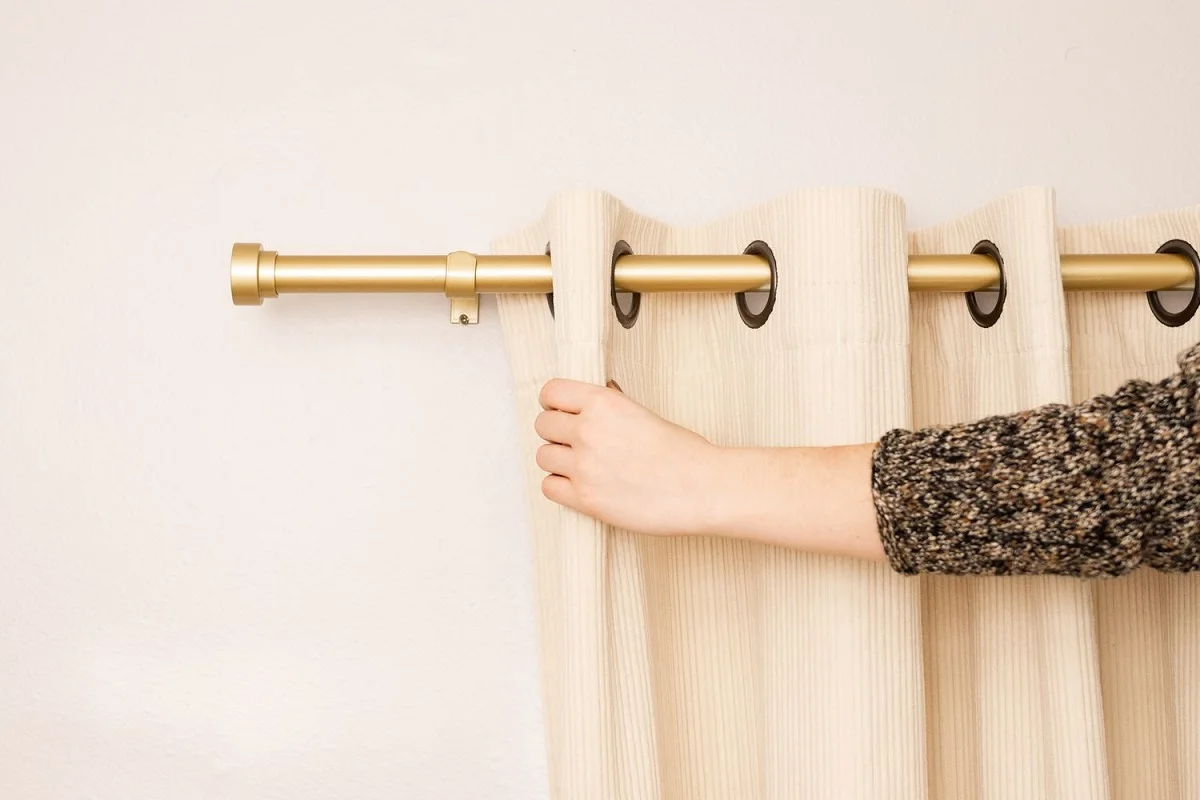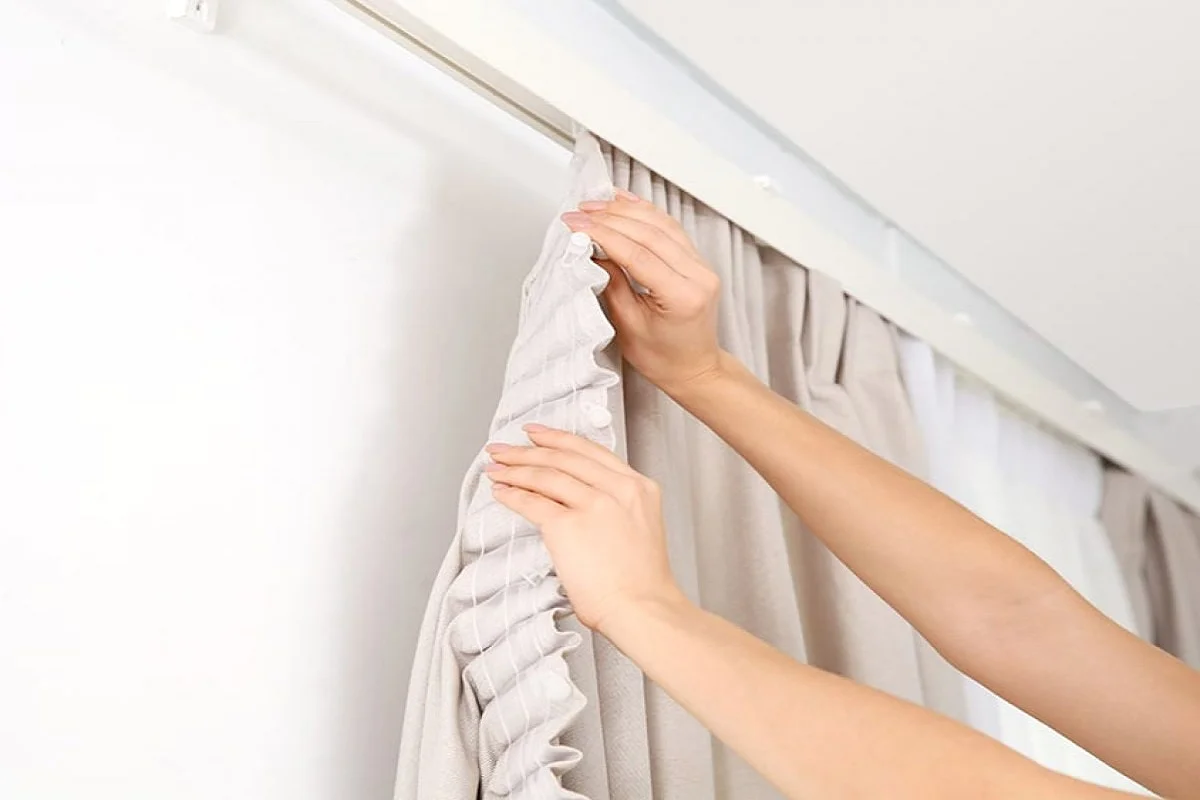Welcome to the world of elevated home décor, where the transformative power of curtains takes centre stage. Your living space is more than just walls and furniture—it’s an expression of your personality and style. Curtains, with their ability to frame windows and enhance natural light, play a pivotal role in creating an inviting atmosphere.
In this guide, “Elevate Your Home Décor: Step-by-Step Curtains Installation Tips,” we embark on a journey to discover the art and science behind installing curtains that not only serve a functional purpose but also elevate the aesthetic appeal of your living spaces.
Curtains are more than mere window dressings; they are a design element that can bring warmth, sophistication, and character to any room. Whether you’re a seasoned decorator or a DIY enthusiast, this comprehensive guide will provide you with the insights and step-by-step tips you need to master the art of curtain installation.
So, let’s dive into the world of curtains and learn how to transform your home into a stylish haven through thoughtful and skillful curtain installation. Elevate your home décor with us as we unravel the secrets to achieving a polished and visually pleasing look that reflects your unique taste and personality.
Brief overview of the importance of curtains in home décor
Curtains serve as integral elements in home décor, playing a multifaceted role that extends beyond mere functionality. Beyond their fundamental purpose of providing privacy and controlling light, curtains wield transformative power in shaping the ambiance of a space. These textile wonders have the ability to soften harsh lines, add warmth, and infuse a room with personality and style.
In the realm of home design, curtains act as visual anchors, framing windows and accentuating architectural features. Their fabric, colour, and pattern choices contribute to the overall aesthetic, creating a harmonious balance with other elements in the room. By controlling natural light, curtains allow homeowners to curate the atmosphere, from cosy and intimate to bright and airy.
Moreover, curtains offer a dynamic canvas for personal expression. Whether opting for luxurious drapes, minimalist sheers, or vibrant patterns, individuals can tailor their curtain choices to reflect their unique taste and lifestyle. The strategic use of curtains can visually manipulate space, making rooms appear larger, cosier, or more sophisticated.
In summary, the importance of curtains in home décor lies not only in their practical applications but also in their ability to elevate the visual appeal and mood of a space. From enhancing privacy to defining style, curtains are key players in the symphony of elements that compose a well-designed home.
How curtain selection influences the installation process
The process of installing curtains is significantly influenced by the careful selection of the curtains themselves. The type, style, and fabric of the curtains play a pivotal role in determining the ease of installation and the overall aesthetic impact. Here’s how curtain selection influences the installation process:
Curtain Rod Compatibility:
- Different types of curtains may require specific curtain rods or hardware. For instance, heavy drapes may necessitate sturdier rods with appropriate support brackets.
- The style and thickness of the curtain fabric influence the choice of curtain rod, impacting how it will be installed and supported.
Length and Width Considerations:
- The length and width of the curtains are crucial factors that influence installation. Longer curtains may require higher mounting positions, while wider ones might need additional support in the middle.
- Proper measurements based on the chosen curtain style are essential for achieving a balanced and visually appealing look during installation.
Header Styles and Hanging Mechanisms:
- Different curtain styles come with various header types (e.g., rod pocket, grommet, pleated). Each header style may require a specific hanging mechanism, affecting how the curtains are attached to the rod.
- Understanding the chosen header style is essential for a seamless and secure installation process.
Weight and Fabric Density:
- Heavy or dense fabrics, such as velvet or blackout curtains, can impact the weight and bulkiness of the window treatment. This affects how the curtains hang and whether additional support or specialised hardware is needed.
- Lightweight fabrics may require careful handling during installation to prevent damage or wrinkling.
DIY vs. Professional Installation:
- The complexity of curtain installation can vary based on curtain types. While some curtains are well-suited for DIY installation, others with intricate designs or special features may benefit from professional installation.
- Understanding the installation requirements of the chosen curtains helps homeowners make informed decisions about whether to embark on a DIY project or seek professional assistance.
Overview of different curtain styles and their impact on décor
Curtains are not just functional window coverings; they are also powerful design elements that can dramatically influence the overall décor of a space. The various curtain styles available offer homeowners a diverse range of options to express their tastes and complement the aesthetic of any room. Here’s an overview of different curtain styles and their impact on décor:
Rod Pocket Curtains:
- Style: These curtains feature a sewn-in pocket along the top that allows a curtain rod to slide through.
- Impact on Décor: Rod pocket curtains have a classic and timeless look, providing a soft and gathered appearance. They work well in traditional or formal settings, adding a touch of elegance.
Grommet Curtains:
- Style: Grommet curtains have metal rings along the top that slide directly onto the curtain rod.
- Impact on Décor: Grommet curtains offer a contemporary and modern aesthetic. The clean lines and sleek appearance make them suitable for minimalist or urban décor styles.
Tab Top Curtains:
- Style: Tabs of fabric create loops through which the curtain rod is threaded.
- Impact on Décor: Tab top curtains have a casual and relaxed look, making them ideal for informal or bohemian-inspired interiors. They often contribute to a laid-back and comfortable atmosphere.
Pleated Curtains:
- Style: Pleats are folds sewn into the top of the curtain, creating a tailored and structured appearance.
- Impact on Décor: Pleated curtains exude sophistication and are commonly associated with formal settings. They work well in traditional, classic, or upscale contemporary interiors.
Sheer Curtains:
- Style: Sheer curtains are made of lightweight, translucent fabrics that allow diffused light to pass through.
- Impact on Décor: Sheer curtains add an airy and ethereal quality to a space. They are perfect for creating a soft and romantic ambiance, often used in combination with other curtain styles.
Blackout Curtains:
- Style: These curtains are designed with thick, opaque fabrics to block out light completely.
- Impact on Décor: Blackout curtains are practical for bedrooms or media rooms where light control is essential. They contribute to a cosy and private atmosphere.
Valances and Swags:
- Style: Valances are short fabric treatments that cover the upper part of the window, while swags are draped fabric that hangs loosely over the curtain rod.
- Impact on Décor: Valances and swags add decorative flair to windows. They are often used in combination with other curtain styles to enhance the overall aesthetic and create a layered look.
Café Curtains:
- Style: These curtains cover only the lower half of the window, providing privacy while allowing light to enter.
- Impact on Décor: Café curtains are charming and work well in kitchens or bathrooms. They offer a balance between privacy and natural light, contributing to a welcoming atmosphere.
Tips on Maintaining Curtain Hardware for longevity
Maintaining curtain hardware is essential to ensure its longevity and optimal performance. Regular care and attention can prevent issues such as rust, corrosion, or malfunctioning mechanisms. Here are some tips on maintaining curtain hardware for longevity:
Regular Cleaning:
Dust and debris can accumulate on curtain rods, brackets, and rings over time. Regularly clean the hardware with a soft, dry cloth to remove dirt and prevent build-up. For stubborn stains, use a mild cleaning solution suitable for the specific material of the hardware.
Avoid Harsh Cleaning Agents:
When cleaning curtain hardware, avoid using abrasive or harsh cleaning agents. These can damage the finish and accelerate wear. opt for mild, non-abrasive cleaning solutions to protect the integrity of the hardware.
Inspect for Rust or Corrosion:
Regularly inspect curtain rods and brackets for signs of rust or corrosion, especially in high-moisture areas like bathrooms. If any rust is detected, use a rust remover and consider applying a protective coating to prevent further oxidation.
Tighten Loose Screws:
Check for loose screws in brackets, finials, and other hardware components. Use a screwdriver to tighten any loose screws to ensure stability. This simple maintenance step prevents the hardware from becoming wobbly or unstable.
Lubricate Moving Parts:
For curtain hardware with moving parts, such as rings or pulleys, apply a silicone-based lubricant to ensure smooth operation. Lubrication prevents friction, reduces wear and tear, and prolongs the life of the moving components.
Check for Bent or Damaged Components:
Inspect curtain rods and brackets for any signs of bending or damage. Bent components can affect the stability and appearance of the installation. If damage is identified, consider replacing the affected parts promptly.
Protect Against Moisture:
In areas prone to high humidity, such as bathrooms or kitchens, take measures to protect curtain hardware from moisture. Consider using moisture-resistant materials or applying a protective sealant to prevent corrosion.
Avoid Overloading:
Be mindful of the weight capacity of your curtain hardware. Avoid overloading rods and brackets with excessively heavy curtains, as this can lead to premature wear and damage. Choose hardware that matches the weight and length requirements of your window treatments.
Remove Curtains During Cleaning:
When deep cleaning the room or washing curtains, consider removing the curtains from the hardware to prevent potential damage. This allows you to clean both the curtains and the hardware thoroughly.
Store Spare Components:
If your curtain hardware comes with spare components (screws, brackets, etc.), store them in a safe place. Having spare parts on hand makes it easier to address issues promptly without delaying repairs.
Conclusion
In conclusion, the installation and maintenance of curtains extend far beyond their functional purpose—they are integral to shaping the ambiance and aesthetics of our living spaces. The journey from selecting the perfect curtain style to the meticulous installation process, and finally, the ongoing care of curtain hardware, is a testament to the thoughtful curation of a home’s interior.








